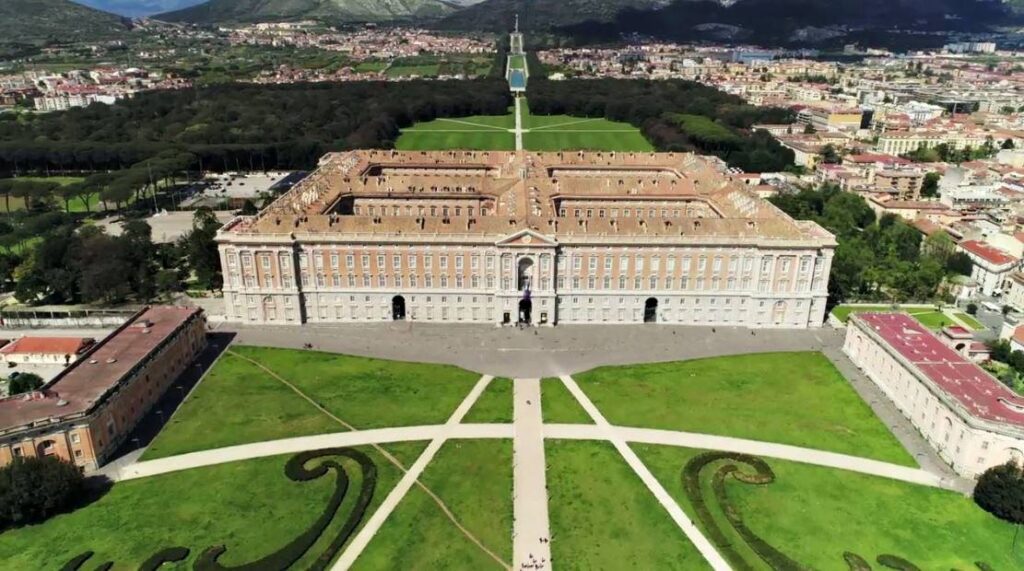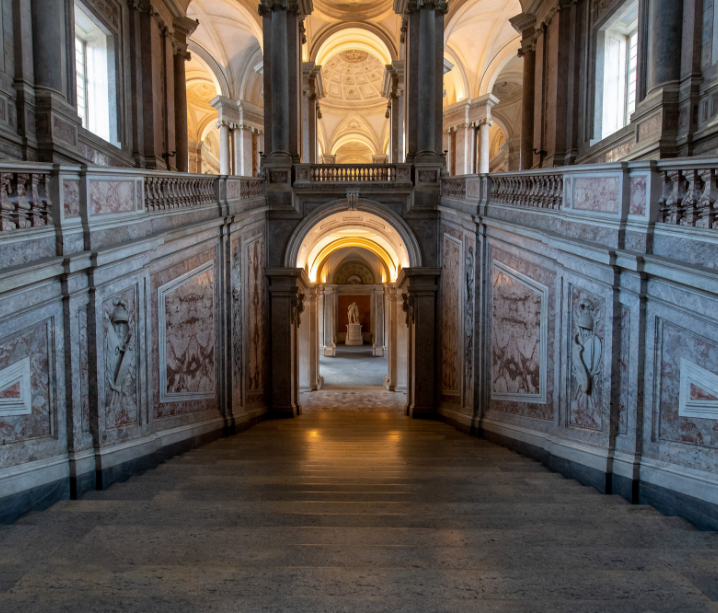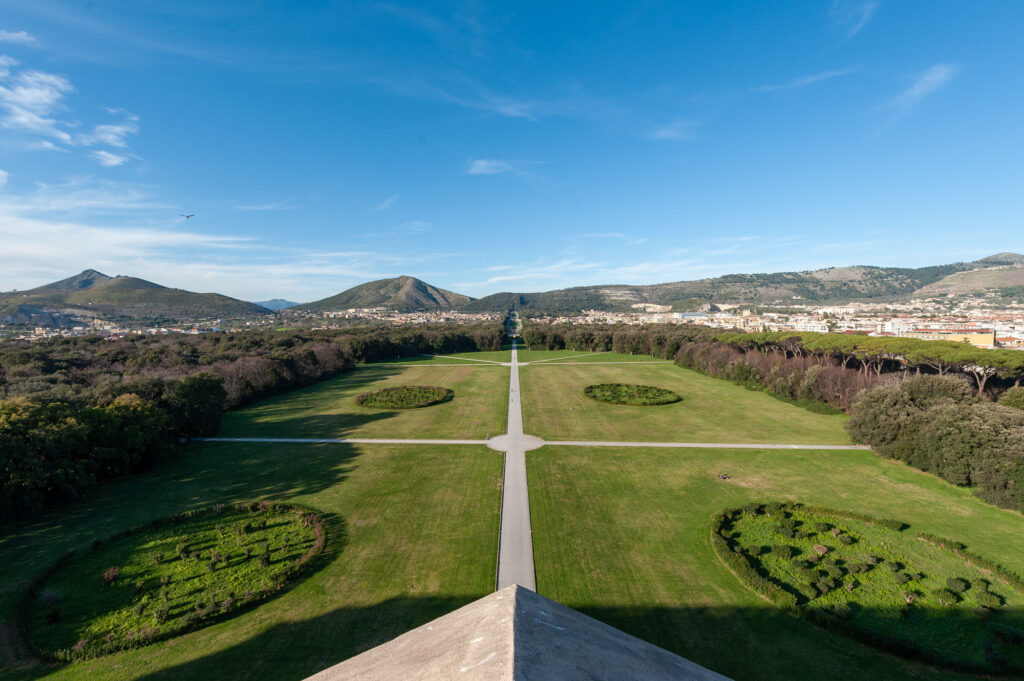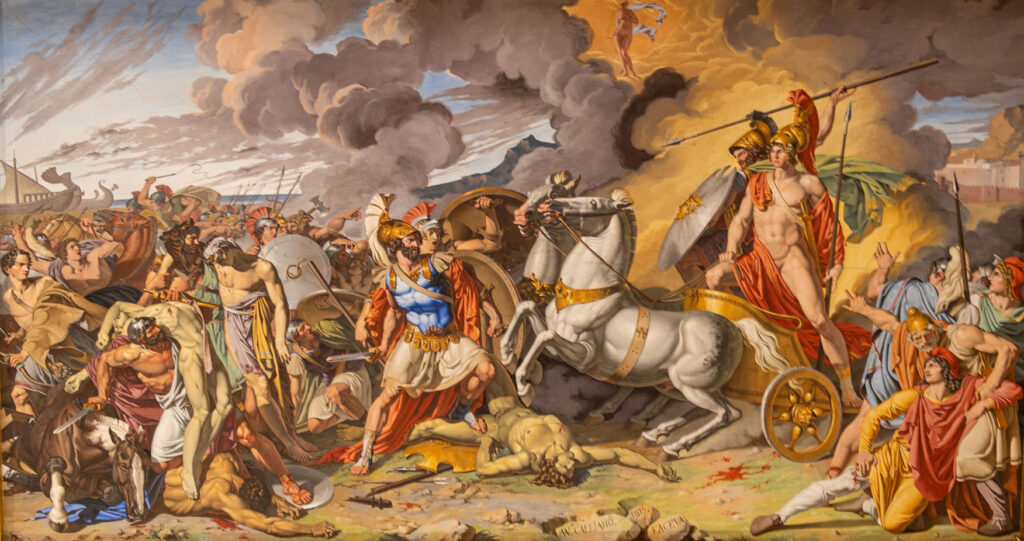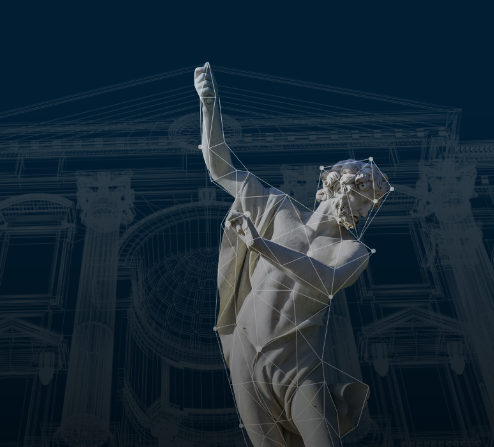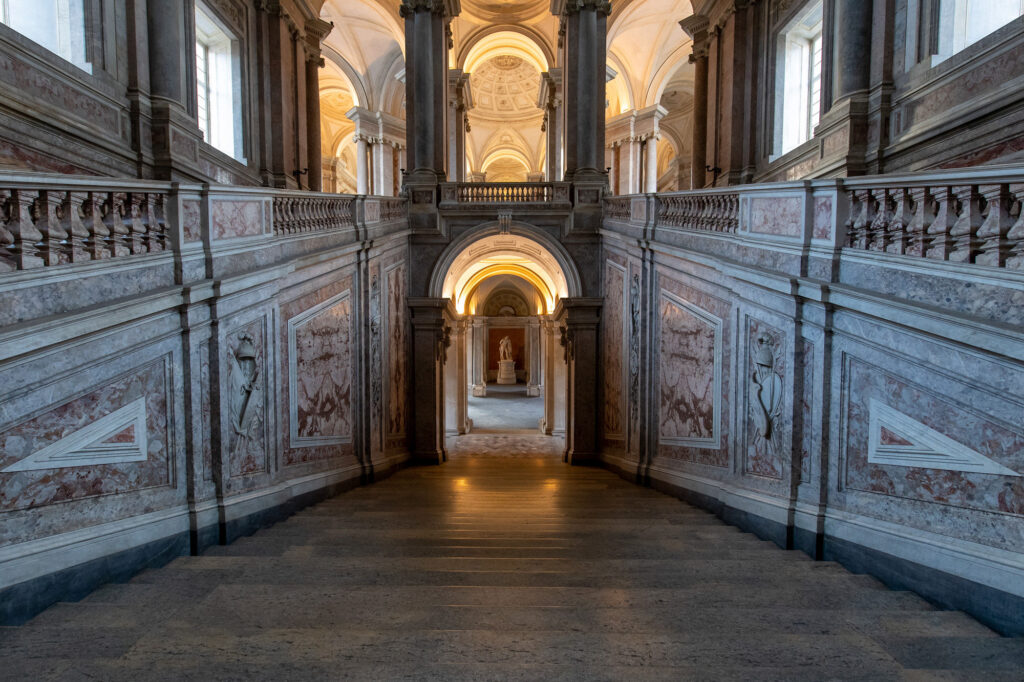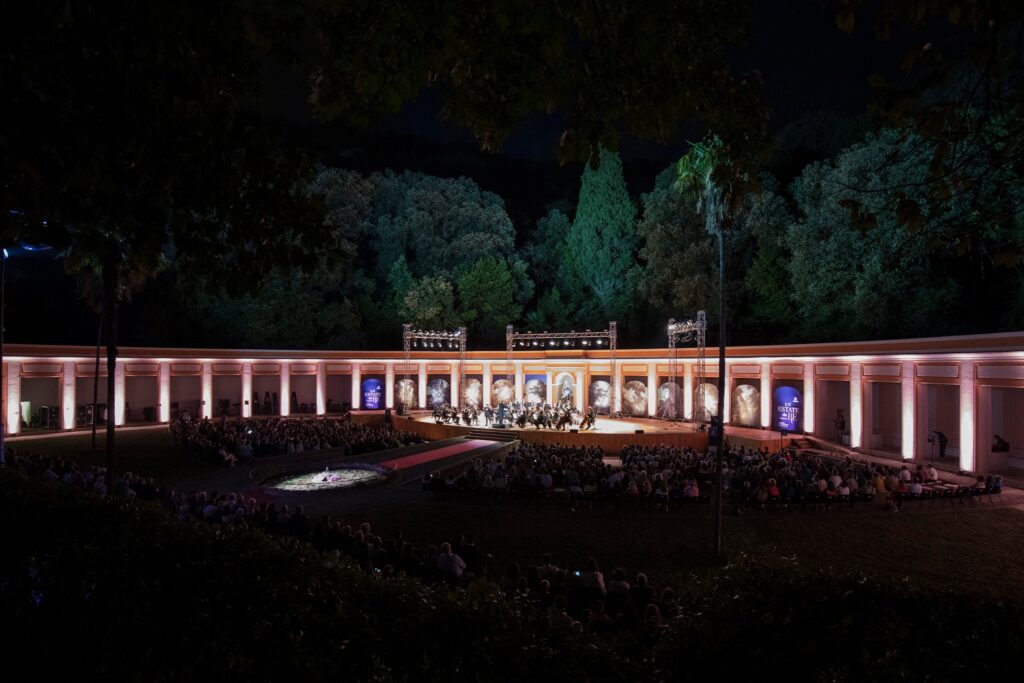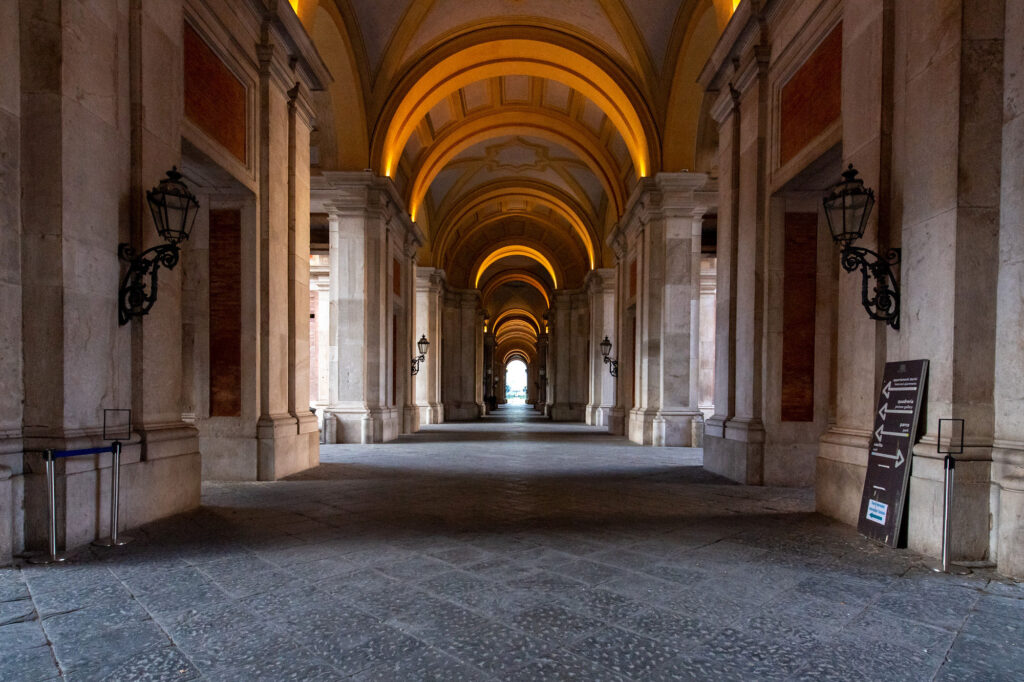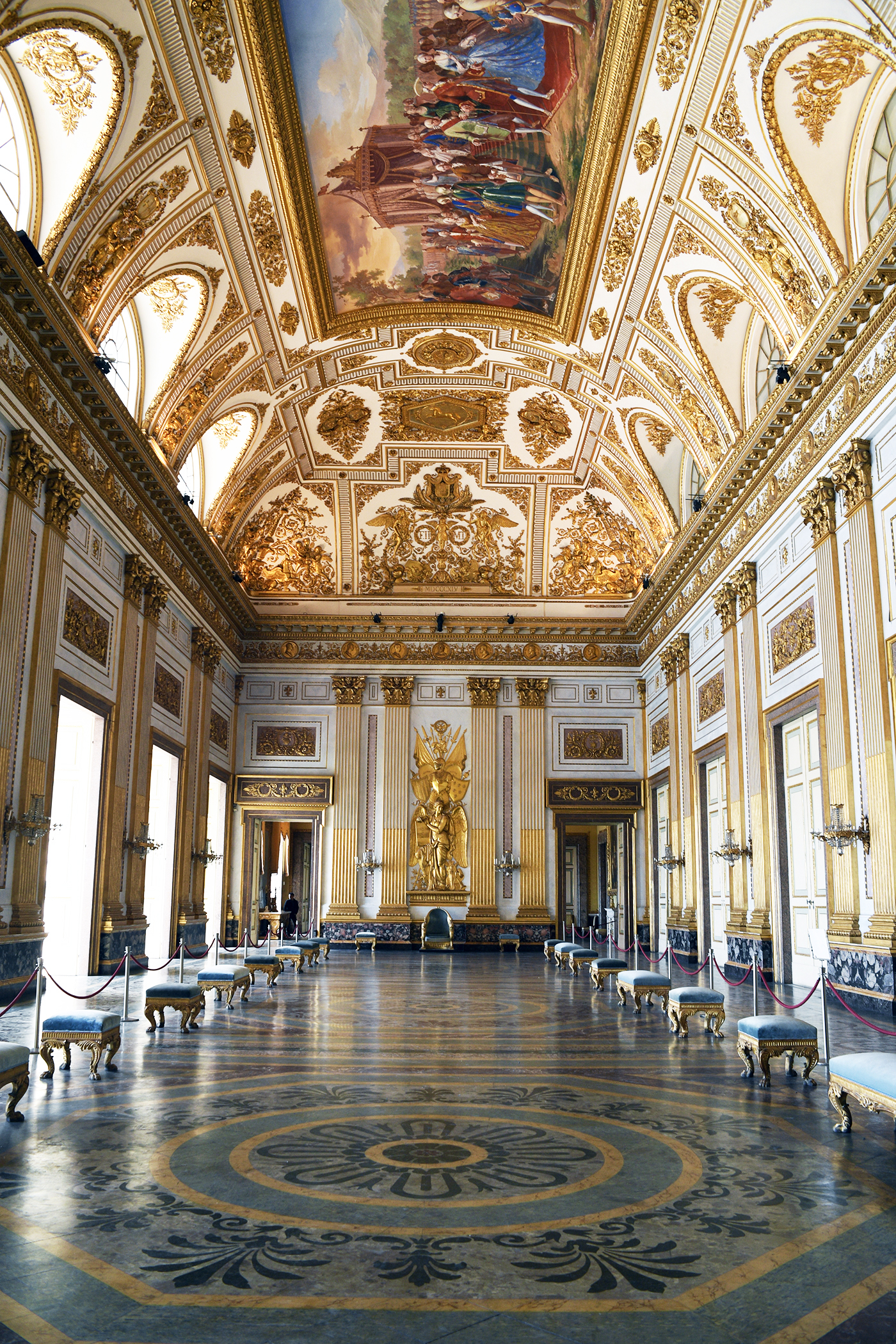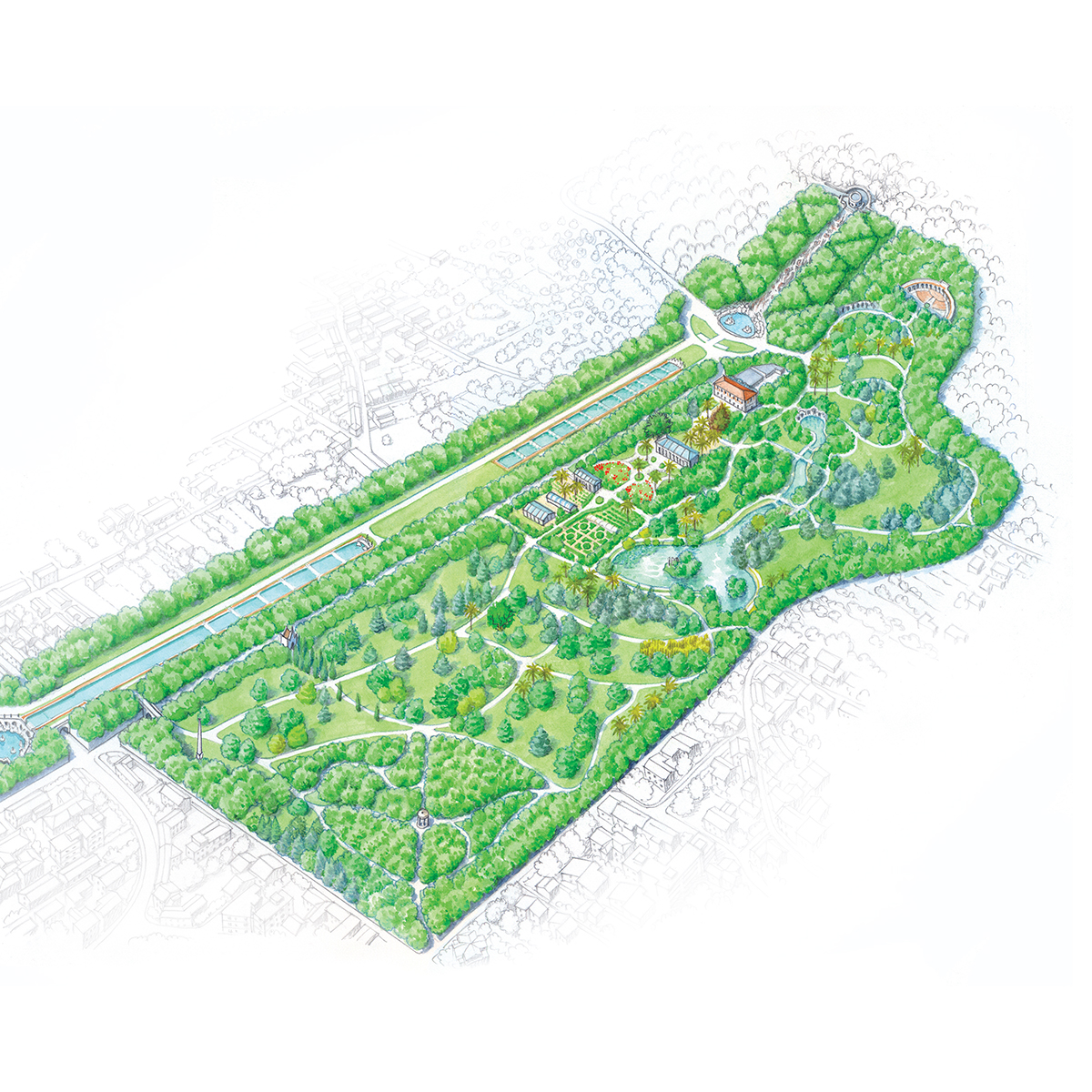The splendour and power of the Kingdom lies in gold
It took almost half a century for the most important Hall of the Royal Palace to be arranged, a symbol of the grandeur and power of the Kingdom: the Throne Hall.
Intended for public audiences since Luigi Vanvitelli’s design, it was the last room in the Palace to be completed. The works began in 1811 under Joachim Murat’s regency and were completed by Ferdinand II of Bourbon in 1845, on the occasion of the VII Congress of Italian Scientists.
Almost all the best Neapolitan artists of the mid-nineteenth century participated in the decorations, which expressed the splendour of the court with abundant use of gold. Classic allegories and Bourbon symbols fill the walls along with portraits of the kings of Naples.
At the back of the room is the throne in carved gilded wood, upholstered with velvet.
The monumental fresco on the vault by Gennaro Maldarelli recalls the laying of the first stone of the Royal Palace, which took place in 1752.

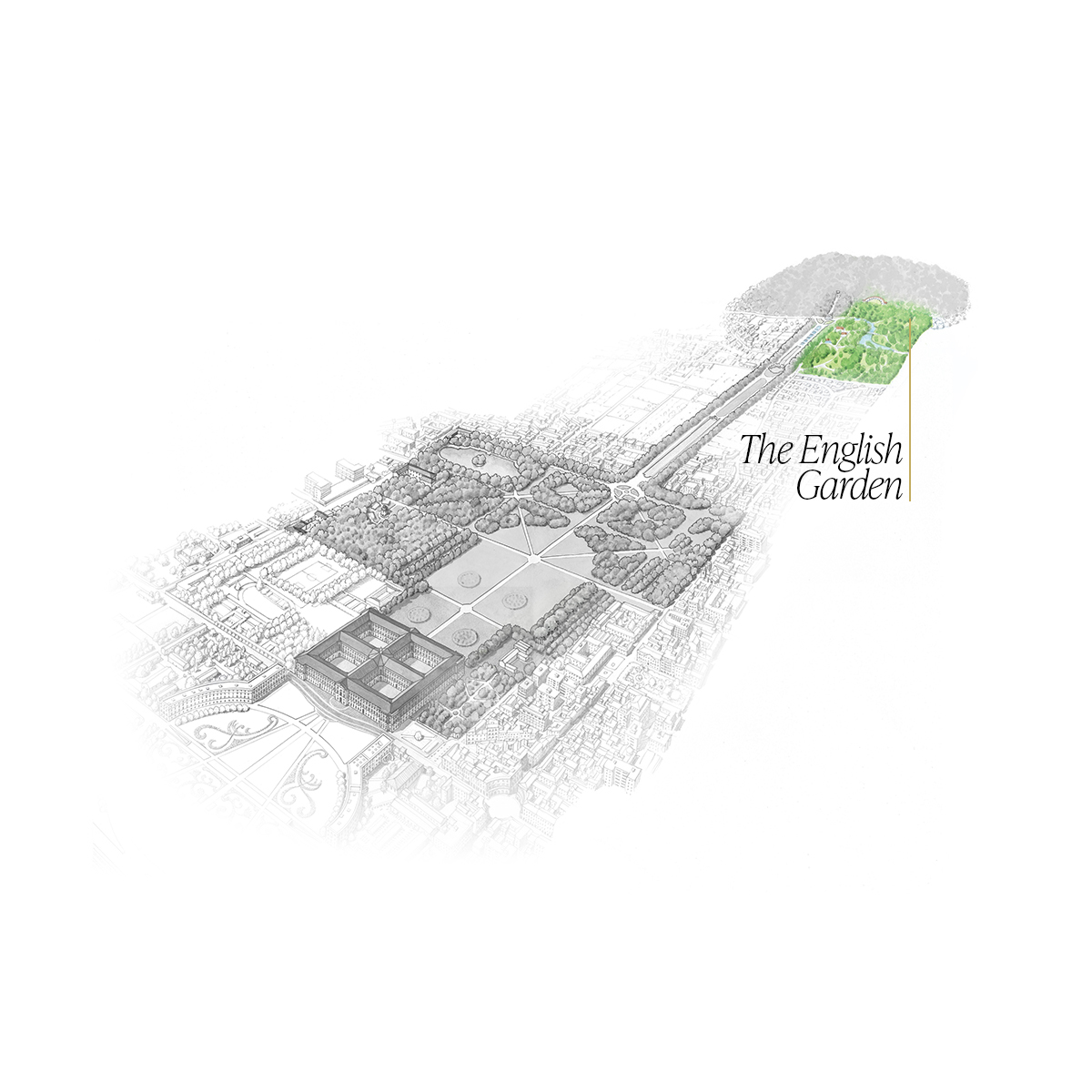
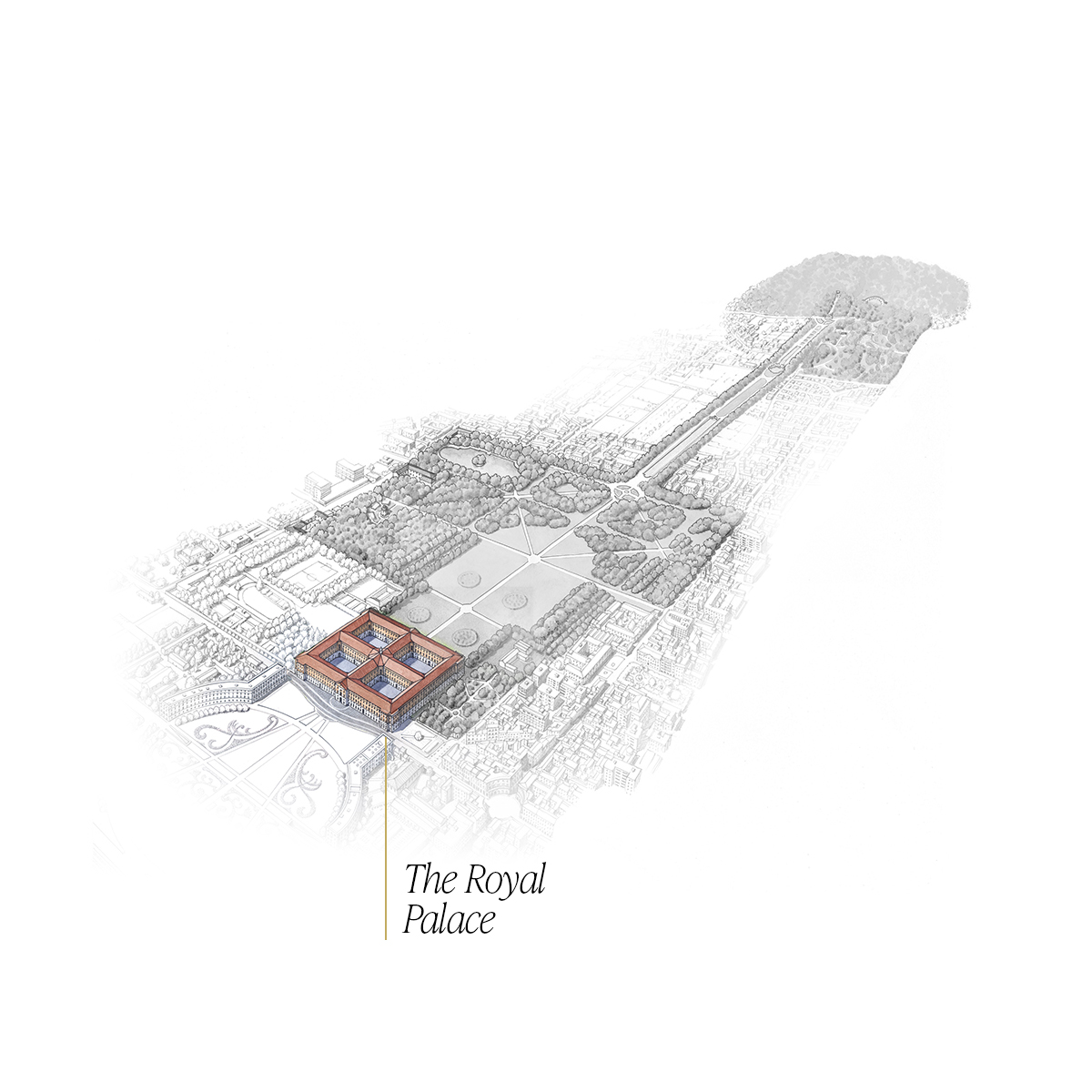
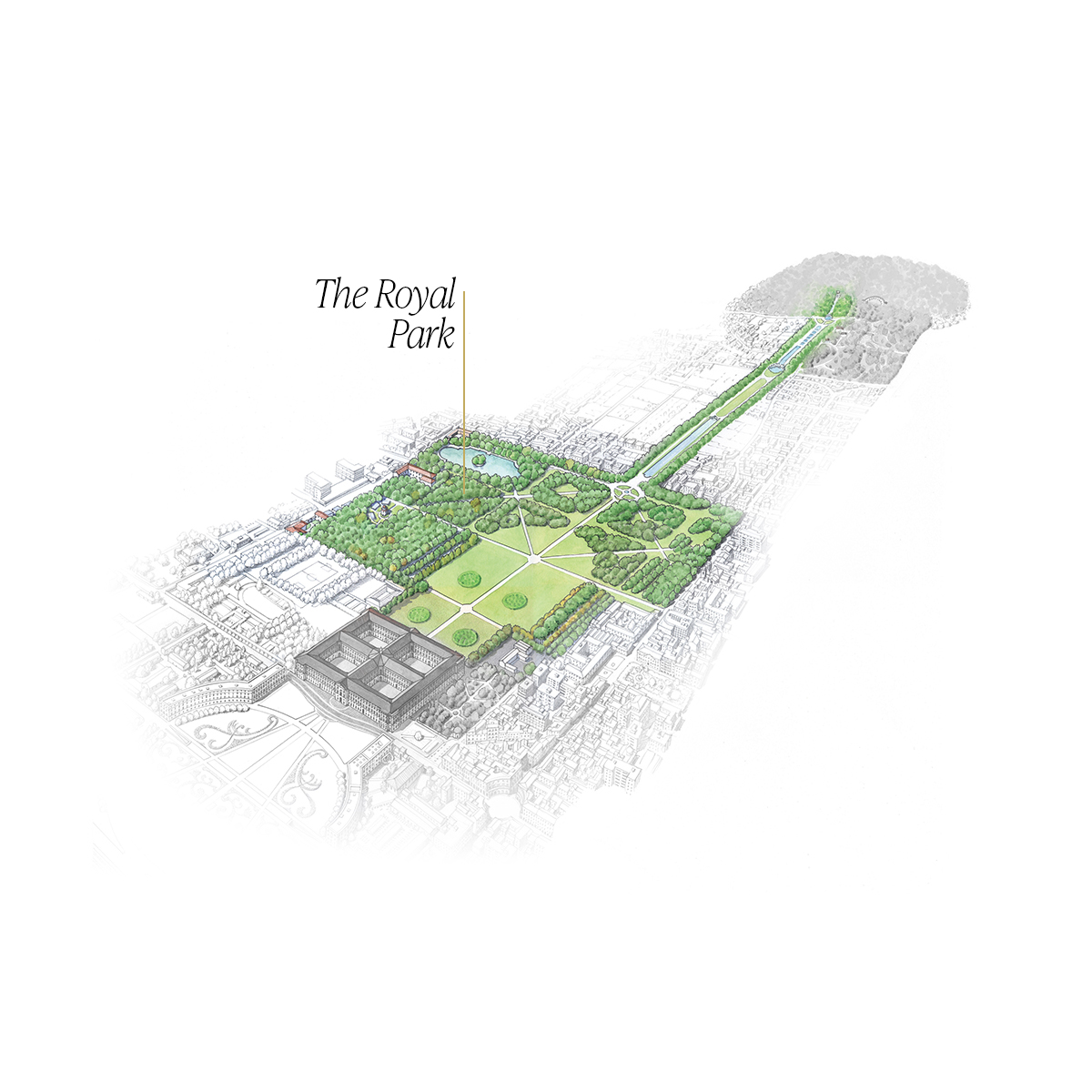
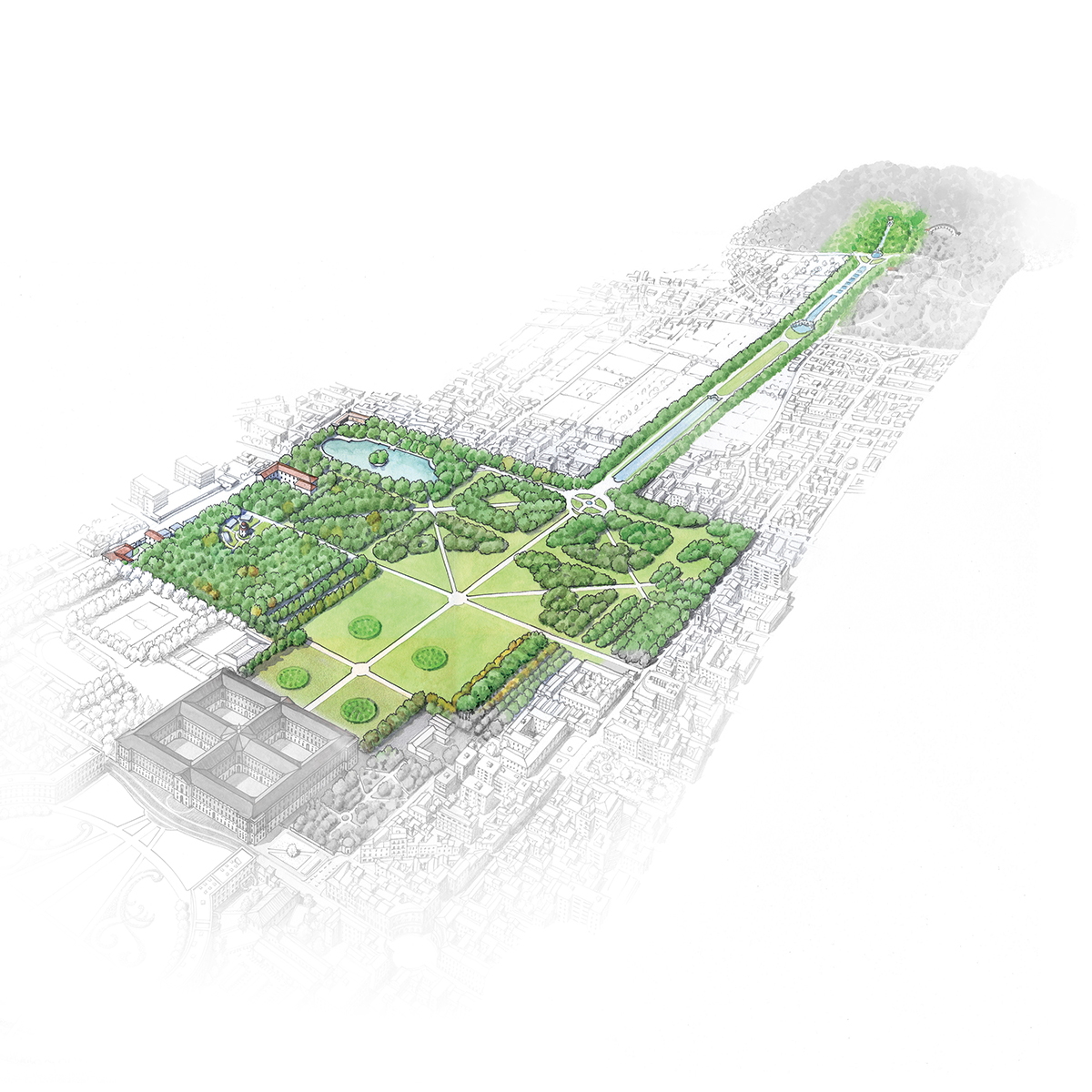
 Via d'acqua
Via d'acqua Castelluccia
Castelluccia Peschiera
Peschiera The Fountain of Dolphins
The Fountain of Dolphins The Fountain of Aeolus
The Fountain of Aeolus The Fountain of Ceres
The Fountain of Ceres The Fountain of Diana and Actaeon
The Fountain of Diana and Actaeon The Fountain of Venus and Adonis
The Fountain of Venus and Adonis The waterfall and Torrione
The waterfall and Torrione The Bosco Vecchio (Old Wood)
The Bosco Vecchio (Old Wood) The Margherita Fountain
The Margherita Fountain





